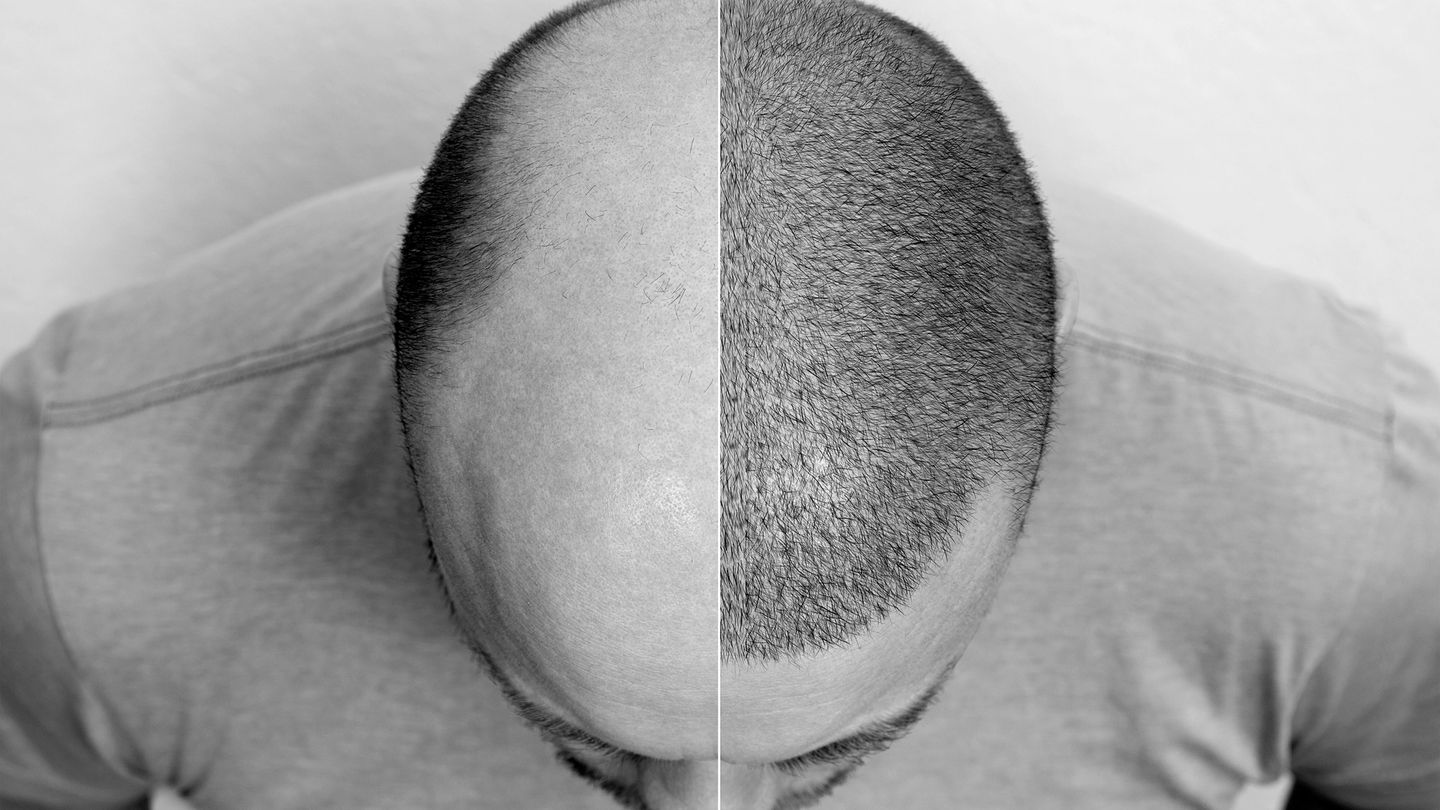


Hair loss is a hot topic among men. Once you pass 21 the chances are that someone in your inner circle will be talking about losing their hair. Or you'll see a celebrity being scrutinised on X and Instagram for their creeping back hairline.
Some have it, some don't. The ones that are lucky enough to sail through their 20s, 30s and even 40s with follicular prowess are, to some - those with a polished dome -, a marvel (we're looking at you Hugh Grant).
To be clear, going bald isn't a bad thing and it shouldn't be shameful. But, should you wish to keep your hair, as it's 2024 and technology has advanced somewhat, you don't have to succumb to the pitfalls of ageing or that stressful career you decided to embark on once you graduated.
Instead, there are are some very effective ways to reverse male-pattern thinning, or, once it's hit, actually reverse hair loss. A persistent use of minoxidil and finasteride (usually both, sometimes just one) can help you to hang on to the hair you already have, but sometimes it's just a little too late. The best for this being, of course, the much talked about hair transplant.
A hair transplant is essentially what it says on the tin and involves taking hair from another part of your head and transferring it to the thinning part of your hair. It's not a wholly complicated procedure, but it can cost you, and you will want to go into it knowing exactly what you're getting.
And for that reason we called on award-winning Christopher D'Souza, the Hair Transplant Surgeon and Medical Director of The D'Souza Clinic, as well as the Diplomate & Secretary of the American Board of Hair Restoration Surgery and President of the British Association of Hair Restoration Surgery.
Below is what he had to say...
"Hair transplant surgery involves moving hair from the permanent zone (at the back and sides of the head) to the area on the scalp where hair has been lost. There are two main donor harvesting techniques Follicular Unit Excision (FUE) and Strip Follicular Unit Transplantation (Strip FUT) .
FUE involves using a small punch usually 0.9-1.0mm in diameter to remove follicular units one by one. Strip FUT involves taking a thin linear strip of hair bearing skin which is then dissected into individual follicular units using a microscope.
In both cases the follicles are transplanted usually in their natural grouping to obtain the desired aesthetic result.
The majority of our patients present with male or female pattern hair loss. Good candidates are generally those that have stabilised their hair loss through non-surgical treatments. This is crucial to obtaining a good long term aesthetic result. Specific causes such as traction alopecia can be treated successfully with hair transplant surgery if the cause has been removed.
If a patient is still actively losing a significant amount of hair it is not a good idea to jump in with hair transplant surgery. The reason being that with continued native hair loss the results of a hair transplant surgery performed can result in an unnatural pattern. Other conditions which cause hair loss secondary to underlying pathology are also not suited to hair transplant surgery.
The first 5 days after hair transplant surgery are the most important. During this time the grafts are really delicate and we advise our patients to take at least a week off work. Redness and swelling is usually down by day 5/6 and any residual crusts by day 10/12. Many of our patients report there is very little to see by 2 weeks post op.
I would recommend prospective patients search for a member of the British Association of Hair Restoration Surgery (BAHRS), the International Society of Hair Restoration Surgery (ISHRS) and a diplomate of the American Board of Hair Restoration Surgery (ABHRS).
The BAHRS website has a really useful advice page and recommends the following -
Four important points to bear in mind when looking for a hair transplant surgeon:
One of the main issues can be failing to plan for the long term. The non-surgical side of hair restoration to stabilise existing hair is essential. There are a limited amount of grafts available to transplant in a lifetime so ensure your surgeon intends to use them wisely. Other issues can be inappropriate hairline design, poor angulation and low density. If performed correctly hair transplant surgery has few complications."
Want more grooming advice? Check out the best new drops of the week
Become a Gentleman’s Journal member. Find out more here.
To receive the latest in style, watches, cars and luxury news, plus receive great offers from the world’s greatest brands every Friday.
